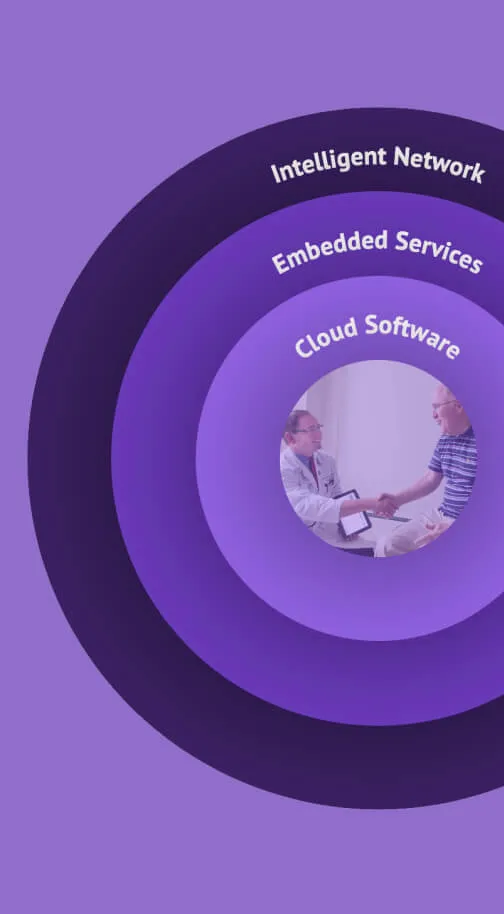New research from athenahealth has uncovered a variety of insights about the challenges physicians are up against today, and how they’re thinking about those challenges as they look ahead.1
Some of the most definitive data from the research has to do with physician burnout. It’s clear—as it has been for years—that healthcare providers in the US are up against a host of challenges, and they are spending more and more of their time trying to solve them (often outside of normal business hours). The result is often burnout.
However, this new research has uncovered some insights into exactly what’s causing burnout among physicians. Specifically, managing patient communications emerged as a leading factor causing physicians to feel overwhelmed or burned out from their work.
Let’s take a closer look at the data and how physicians can begin to address the important, but often taxing, element of patient communication.
Physicians are struggling to keep up with patient communication expectations
How healthcare workers communicate with patients has evolved dramatically in recent years, especially with the advent of healthcare technology tools such as telehealth and HIPAA compliant text messaging. Most patients now expect access to a patient portal which they can use to view electronic health records and test results, schedule or reschedule an appointment, and—perhaps most importantly—communicate with their physician.
Patient portals connected to electronic medical records systems have delivered many important benefits: they increase patient access to care teams, provide tools for patient health management, and help to foster more direct connections between patients and their providers, also known as patient-centered care. They’ve become the primary tool supporting physician-patient communication across the industry.
However, these worthy benefits have come with significant demands on physicians’ time and attention. The expectations they face for keeping up with patient communication, which can become excessive, represent an outsized burden on physicians, according to recent data.
Patient communication expectations add to frustration and burnout
Research indicates that patient communication demands are taking a real toll. According to a recent athenahealth study, 77% of physicians feel overwhelmed by excessive patient communication demands (emails, phone calls, text messages, etc.).2 70% say they are frustrated by these growing demands at least once per week (or more).3
Part of the challenge is that communication, in whatever form it takes, is typically highly manual work. Just like clinical documentation—another manual task frequently cited as a contributor to physician burnout—the work involved in composing and sending patient communications frequently happens outside of the office, and outside of normal business hours. And not just during the evening hours—60% of those surveyed for the study say they are expected to respond to patient communications “all hours of the day, every day of the week.”4
What is the result of these high expectations and the work required to meet them? Around half of the physicians surveyed say they feel burned out on a regular basis due to the constant demand to respond to patients' emails, phone calls, and texts.
These are troubling numbers. However, the solution is not to blame patients or restrict the access to their health information they’ve come to expect and appreciate. Instead, these data showcase the need for a more balanced approach to communication so patients can continue to get what they need without shifting too much burden onto the physicians who are dedicated to helping them.
Next, let’s look at a few recommendations to help physicians balance their time spent on patient communications, and some general guidelines physicians may want to share with their patients to level-set expectations.
Recommendations for managing expectations around patient communication
It is not surprising that challenges around patient communication are reaching a critical point for many practitioners. That’s because it’s a relatively new challenge. According to the American Medical Association, physicians today receive 57% more patient portal messages than they did before the COVID-19 pandemic started in March 2020.5
Now that patient portals are standard and most people have experience using one, it can be helpful to share some communications best practices with your patients so you know you’re working from the same set of expectations. If you and your patients follow them, these tactics should also help scale down the amount of time it takes to manage these communications.
Consider sharing these best practices and general expectations with your patients, as recommended by the American Medical Association.6
Short, simple messages are best
As a general rule, it’s difficult (and time consuming) to convey complex ideas via portal communications. It is equally difficult to convey nuances in tone and emotion, which are important considerations when a person’s health is the topic of conversation.
Let your patients know that, for anything beyond simple, straightforward messages, they should expect a phone call or follow-up appointment. Adding one of these tasks can save time in the long run if they help you and your patient avoid confusion and enable you to have more productive interactions on the topic.
Ask your patients to avoid repetitive messages
Some common portal requests, like prescription refills, should be made via one channel. For example, when a patient requests a refill via the portal, then messages their provider, then calls the clinic and/or pharmacy, this simple request becomes unnecessarily complex and labor-intensive.
Educate your patients on your preferred process for these common requests. When your patient is successful in using that process, they shouldn’t feel the need to send requests over multiple channels.
Establish a response time window
Your patients aren't familiar with your day-to-day workloads, and they probably don't realize you're answering their questions after-hours. If possible, try to commit to responding to messages within a particular time window. For instance, if you make it clear to your patients that you typically respond to messages within 72 hours, it can take the pressure off you to respond as soon as possible, wherever you are. This basic agreement can provide you with more flexibility and control over your time while you continue to meet the commitments you've made to your patients.
Allow your care team to help
Many common questions or requests made through a patient portal can be managed by your care team. Let patients know that when they send a communication via the portal, they are messaging their care team, not necessarily their physician.
If you’d like your team to assist with responding to communications, set clear guidelines for which types of questions should be escalated to your inbox. A healthcare IT platform with customizable workflow management capabilities can be a significant help in this area.
Don't be afraid to suggest a follow-up appointment
Despite the many wonderful benefits resulting from more open digital communication with patients, there is no replacement for face-to-face interactions. If you think a written response will elicit more questions, or the topic being discussed is simply too complex or too emotionally sensitive, invite your patient to schedule a follow-up appointment. Your time in the room with patients is the foundation of your relationship and, for certain occasions, can’t be replaced with portal messages.
Agreeing with patients on these rules of engagement for the patient portal can go a long way in easing excessive communication demands.
Automated patient outreach: Be proactive when you can
Automation also has a part to play in easing the burden of managing patient communications. Often, patient questions and concerns can be addressed proactively with automated outreach programs. For instance, your healthcare IT platform may enable you to send reminders, recommend population-based screenings and/or wellness initiatives, send clinical information and educational materials (especially during seasonal outbreaks), and generally close care gaps before your patients begin sending questions and making requests for that information.
The more timely, useful information your patients receive from you, the fewer ad hoc messages you'll have to respond to.
Balancing engagement with scalable processes
Empowering your patients with a secure, user-friendly patient portal is a crucial element in keeping patients engaged and active in their own care. However, it’s clear that physicians need to take steps to manage the time and energy required to respond to patient communications thoroughly and in a timely manner.
To learn more about how healthcare IT solutions are helping physicians achieve their efficiency goals, check out the articles linked below.
Study: clinical documentation work leads to physician burnout
As clinician burnout rises, how can technology help?
6 Ways Your Large Practice Can Begin Integrating AI Technology to Drive Efficiency
- 2023 Physician Sentiment Survey, commissioned by athenahealth and fielded by Harris Poll, Jan 2024
- Ibid
- Ibid
- Ibid
- AMA, What’s adding to doctor burnout? Check your patient portal inbox, Feb. 2023; https://www.ama-assn.org/practice-management/digital/what-s-adding-doctor-burnout-check-your-patient-portal-inbox
- AMA, What doctors wish patients knew about using a patient portal, June 2022; https://www.ama-assn.org/practice-management/digital/what-doctors-wish-patients-knew-about-using-patient-portal












